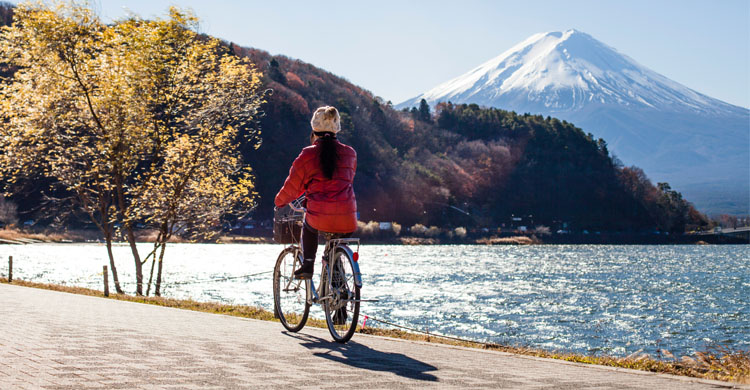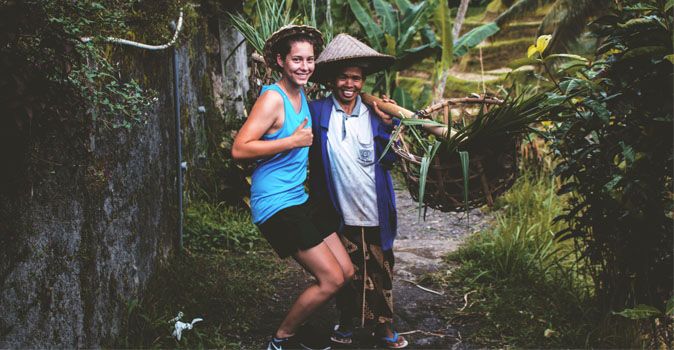A place that embodies timelessness, Japan is the perfect travel destination to experience the sheer fusion of ancient traditions and modern life.
You’ll find shimmering, neon-lit streets only a car ride away from dancing geishas, and Zen rock gardens juxtaposed with a raucous nightlife. The country of contrasts, Japan offers a mixture of experiences and backdrops to satisfy every traveler’s dream.
Whether you’re interested in navigating the hustle and bustle of Tokyo, skiing the snowy mountains of Hokkaido, or immersing yourself in Japan’s traditional culture, this Japan travel itinerary for 14 days covers it all.
Are you ready to fall in love?
But First – When is the Best Time to Go to Japan?
Japan is a year-round destination, so deciding when to go depends entirely on you. The season you choose will only affect your packing.
Peak Season: April – August
Spring and summer are Japan’s peak seasons. Experience cherry blossom season in April or enjoy warm summer days in August. August is especially popular because of all the festivals – from Obon Festival to Daimonji Fire Festival in Kyoto.
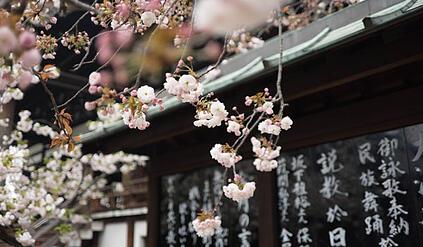
Best Months for Winter Travel: January – March
January through March is the best time to go to Japan if you love winter. Participate in all sorts of winter activities in the Japanese Alps or get low rates for accommodations (apart from Japanese New Year) in Tokyo.
Transportation Hassle: Solved!
The public transport system in Japan is exceptionally clean and hassle-free.
Consider purchasing the Japan Rail Pass if you plan to follow this Japan travel itinerary for 14 days (or if you’ll be in Japan for at least 7 days). This will help you hop on and off trains without ever having to worry about purchasing tickets.
The JR Pass is available for 7, 14, or 21 consecutive days, but you will need to book in advance before you arrive in Japan.
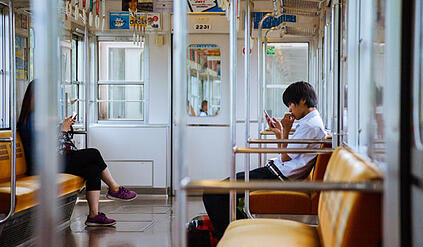
PRO TIP! Visit the Hyperdia website for updated timetables and transport options. This site makes it easy to get from one place to the other in Japan.
Day 1 – 4: Bustling Tokyo!
Tokyo is a great first stop when it comes to visiting Japan. The city is, simply put, unreal – its bustling metropolis buzzes with endless possibilities and constant life. It also offers a plethora of attractions for every type of traveler.
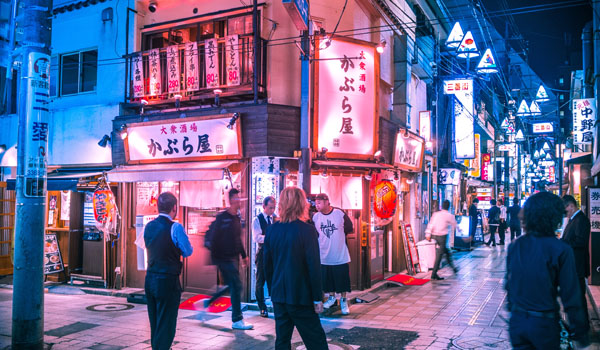
Arrival – Main Airport
Tokyo has two main airports:
- Narita Airport
- Haneda Airport
We recommend flying into Haneda Airport if possible – it’s closer to central Tokyo. If you’re flying into Narita Airport then the easiest way to get to the city center is via the Narita Express Train.
Where to Stay in Tokyo
- Luxury: The Grand Hyatt Hotelis one of the best places to stay for an ultra-luxurious experience. Or you can spend your time at Park Hyatt Tokyo, the hotel from Lost in Translation.
- Mid-Range: Akasaka Excel Hotel Tokyo is ideal for its convenient location and proximity to a subway station. The Gate Hotel by Hulic is another mid-range hotel that feels luxurious but offers more affordable prices than the rest of Tokyo.
- Budget: One of the most popular budget hotels in Tokyo is the Richmond Hotel Asakusa, known for its walking distance to the Sensoji Temple.
Where to Eat in Tokyo
Choosing where to eat in Tokyo is exceptionally hard because everything is just way too good. You’ll find everything from cheap eats to fine dining, incredible vegan restaurants, and the greatest number of Michelin-starred restaurants in the world.
Some of our top picks include:
- Umegaoka Sushi No Midori – best for affordable sushi
- Kotaro – for dishes that are made right in front of you (by Chef Kotaro Hiyashi)
- Tamawari – for the most flavorful soba in Tokyo
- Ginza Adachi Naoto – for a creative approach to traditional Japanese dishes
Get the Tokyo City Guide and discover more things to do, where to stay, and how to get around in Tokyo!
What to Do in Tokyo – Day 1
The possibilities for your first day in Tokyo are endless. Pass through the gates of Kaminarimon and spend your first few hours exploring the Nakamise Shopping Street in Asakusa (the center of Tokyo’s “low city”). Embrace the old-town vibe as you make your way to the world-renowned Sensoji Temple, which dates back to 645 A.D.
Next, head over to Tokyo Skytree for panoramic vistas that’ll give you a glimpse of Tokyo’s unique fusion of tradition and modernity.
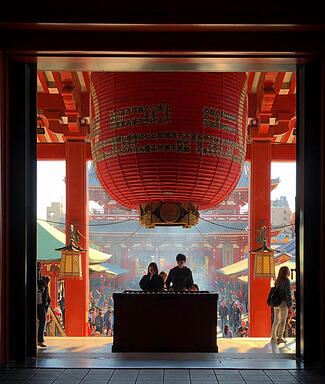
Spend the latter part of your afternoon strolling around Ueno Park. Museum buffs will enjoy this haven of museums, which includes:
- Tokyo National Museum
- National Museum for Western Art
- Tokyo Metropolitan Art Museum
- National Science Museum
Spend your first evening amidst the lively streets of Shibuya. The neon lights, the atmosphere that teems with young energy, and the busiest crossing in the world – sign us up, please!
What to Do in Tokyo – Day 2
Here’s the good news: breakfast at Tsukiji Fish Market will give you a first-hand experience of Japanese culture and life. The bad news? You’ll have to wake up before dawn to avoid the crazy long lines.
After you’re done having fresh sushi for breakfast, take a walk down Omotesando, Tokyo’s high-end, tree-lined shopping street. You choose whether you window shop or splurge at the top designer boutiques!
Next, visit the architecturally-impressive Tokyo International Forum. Walk for 10 minutes to visit the symbolic Imperial Palace and its surrounding parks and imperial buildings.
For your second evening, see if you can snag a seat at a Michelin starred-restaurant in Roppongi – or stop for dinner at any one of the bars or clubs!
What to Do in Tokyo – Day 3
Find the epitome of Japanese culture at Harajuku. Walk around Yoyogi Park for some people-watching and see if you can spot any cosplayers in extravagant costumes or traditional musicians performing!
Adjacent to Yoyogi park is the Meiji Shrine. Tucked into the heart of a leafy forest, the Meiji Shrine is dedicated to the spirits of Emperor Meiji and his wife. Take a leisurely stroll through the 100-year old urban forest that surrounds the shrine.
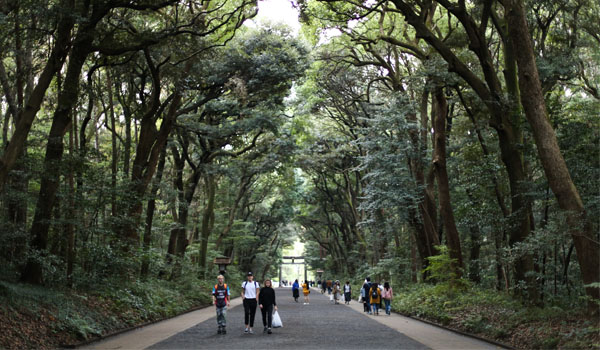
Spend the rest of your day in Shinjuku, one of 23 city wards in Tokyo. Have a drink at New York Bar and enjoy reenacting Bill Murray’s scenes from Lost in Translation!
What to Do in Tokyo – Day 4
One taste of Shibuya isn’t enough for most visitors to Japan. Head back over to Shibuya to admire the renowned Hachiko dog statue dedicated to the Shiba Inu (which inspired a whole movie). Then travel the largest pedestrian crossing in the world – the Shibuya Crossing.
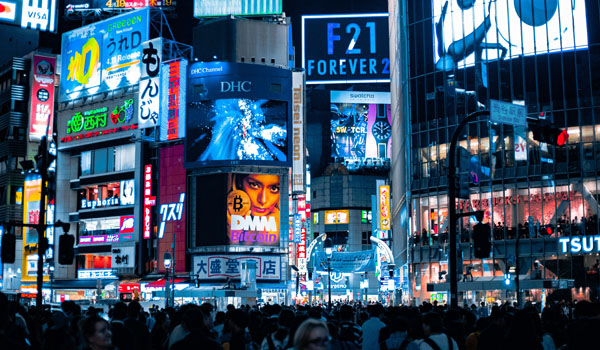
Take the train back to Shinjuku to experience the diversity of Shinjuku Gyoen National Garden. There you can find:
- A traditional Japanese garden
- An English garden
- A French Garden
PRO TIP! If you’re visiting during April, this is the perfect place to view cherry blossoms!
Day 5: Day Trip to Hakone
Ah, Hakone. Pristine blue lakes, hot springs, peaceful forest walks, traditional ryokans, and the majestic backdrop of Mount Fuji make Hakone the ultimate day-trip from Tokyo.
How to Get There
Duration: About 2 hours.
Use your JR Pass to take the train from Tokyo Station to Odawara. Then ride the Hakone Tozan train to Hakone-Itabashi (not included in the JR Pass, so you’ll need to buy a separate ticket).
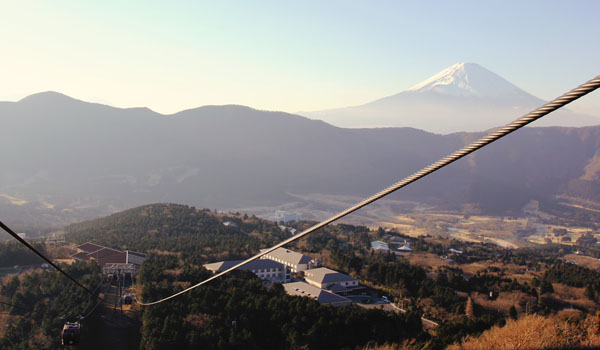
Where to Eat in Hakone
- Tamura Ginkatsutei – the best restaurant for the traditional style of pork katsu
- Pannomimi – get ready for all-things cheese at this quirky restaurant
- Yamahikozushi – find quality, affordable sushi at this restaurant located across the river
- Kirakusou – traditional soba restaurant with hand-made soba noodles
What to Do in Hakone
Once you get to Hakone, spend your morning by Lake Ashi to enjoy the views of the iconic Mount Fuji. Then hop on a pirate boat (seriously!) to get full views of the surrounding mountains and the sprawling lakes.
Visit the Hakone Open Air Museum, which features indoor and outdoor exhibitions, modern sculptures, and an entire Picasso Pavilion exhibit showcasing 300+ of his pieces.
Relish in the sheer grandeur of the Hakone Shrine and wander through Hakone Cedar Avenue. You’ll feel as though you’re in a fairytale in this forest of ancient, 500-meter-tall cedar trees.
Day 6 - 7: Kyoto
The ancient city of Kyoto is one of the top places to put on your Japan travel itinerary. The epitome of traditional Japan, here you will see shrines, temples, wooden buildings, and Japanese gardens. It’s no surprise that Kyoto is home to 17 UNESCO World Heritage sites.
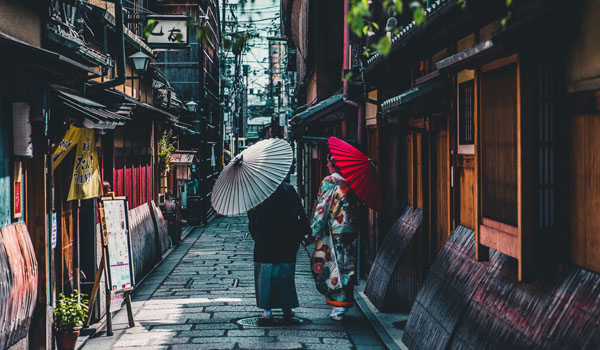
How to Get There
Duration: 2 hours and 40 minutes.
Take the Hikari Shinkansen train to Kyoto.
Where to Stay in Kyoto
- Luxury: Hiragiya Ryokan is an authentic and traditional Japanese inn. Another option is the Ritz-Carlton Kyoto, which features pure elegance, large swimming pools, and spacious rooms.
- Mid-Range: The Kyoto Hotel Okura is classy, traditional, and quiet. It’s also in close proximity to Kyoto’s top attractions, thanks to the Kyoto Shiyakusho-maeSubway Station next door. Royal Park Hotel the Kyoto is right in the city center and close to top geisha areas. Hotel Granvia Kyoto is another large hotel with plenty of shopping and dining opportunities nearby.
- Budget: You’ll get the most value for your money at Hotel Gracery Kyoto Sanjo. Despite it being a budget hotel, its rooms are large, there’s free Wi-Fi, and it’s in a great location.
Where to Eat in Kyoto
- Saga Tofu Ine – enjoy local tofu and try the yuba and yudofu
- Nishiki Market – explore traditional food stalls and try some of the most delicious food in all of Kyoto
- Gion Karyo – have a traditional Japanese-style meal at an old Kyoto house
What to Do in Kyoto – Day 6
Start your first day in Kyoto with a stop at one of the city’s top tourist attractions, the Tenryu-ji Temple. This eminent Zen temple and its mountainous backdrop are perfect for a calm morning stroll.
After you explore the temple, experience the magic of the Arashiyama Bamboo Grove. Listen as the bamboos calmly sway with the breeze, and soak in the beautiful views from Togetsukyo Bridge. Make sure to take a rickshaw ride to get the full local experience!
Head over to the Ryoan-ji Temple for a serene afternoon. Walk through the Zen garden, reflect on your trip thus far, and check this UNESCO World Heritage Site off your list!
Next, stop by Kinkaku-ji Temple, an incredible two-floor Zen temple adorned with golden leaves. This temple offers sprawling views of its peaceful surroundings.
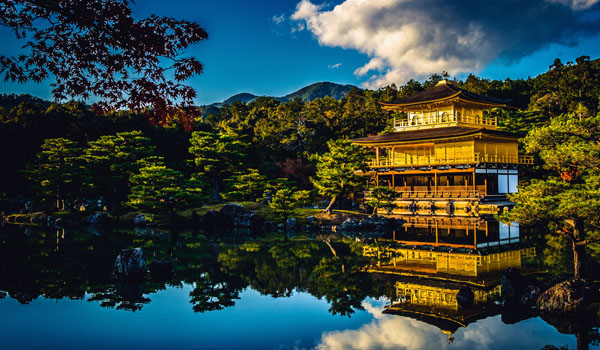
Finally, take a stroll down Hanami-koji street to get a first-hand experience of a geisha district. Get an introduction to several Japanese arts at the cultural show held every day on Gion Corner (at the end of Hanami-koji).
What to Do in Kyoto – Day 7
Today you’ll visit one of Japan’s most iconic temples – the Kiyomizu-dera Temple. This ancient temple offers incredible views of Kyoto from its wooden balcony.
Do some shopping at Sannen-zaka and take some time to gawk at the traditional architecture surrounding you.
If you want to see what a real samurai castle looks like, head over to the magnificent Njio Castle. Ogle at its nightingale floors, gorgeous gardens, and intricately-decorated ceilings, floors, and rooms.
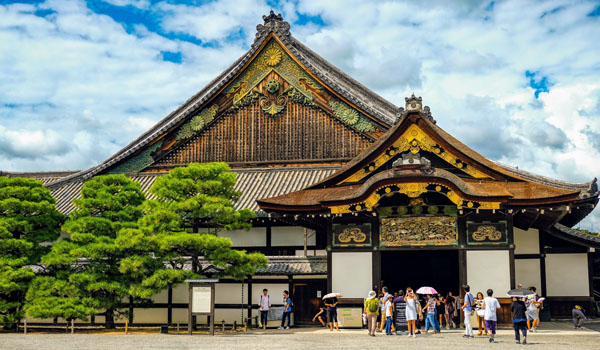
Your last stop in Kyoto is Heian Jingu Shrine, which was built to celebrate the 1100th anniversary of Kyoto as the capital of Japan.
Day 8 and 9: Osaka
Osaka should be a priority in your Japan travel itinerary. The thriving metropolis retains a distinct culture and an energetic vibe unlike anywhere else in Japan.
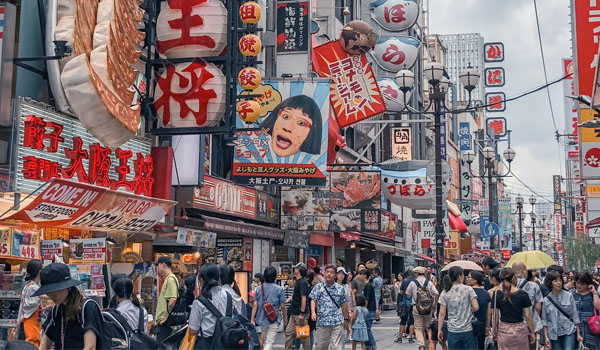
How to Get There
Duration: 12 minutes.
Take the high-speed shinkansen bullet train from Kyoto to Shin-Osaka.
Where to Stay in Osaka
- Luxury: The Ritz-Carlton Osaka is the top choice if you’re looking for luxury accommodation and superb rooms. The St. Regis is another perfect centrally-located hotel.
- Mid-Range: Nikko Hotel Osaka offers rooms with breathtaking views of Osaka.
- Budget: Dorm Hostel Osaka features a library lounge, plenty of dorms, and is very close to most attractions. It’s great for students!
Where to Eat in Osaka
- Janjan Yokocho Alley – a must if you want to try kushikatsu (deep-friend skewered meat or vegetables)
- Dotombori – try the food at any of the stalls for a truly immersive Japanese experience
- Eggs & Things – the most popular brunch place in Osaka
- Salon de Amanto – a restaurant run by artists that host talks and live performances
- The Conrad’s 40 Sky Bar & Lounge – the best bar to take in the breeze and sip on a cocktail after a long day exploring
Explore the Osaka City Guide for more must-see sites and activities!
What to Do in Osaka – Day 8
Take the first few hours in Osaka to acquaint yourself with Dotonbori. A popular tourist destination, this street runs parallel to the Dotonbori canal and is filled with the original charm of Osaka.
There you’ll find markets, theaters, towering neon-lit buildings, shops, and a plethora of street stalls. You’ll probably pass by the famous Gilco Man sign, so be sure to take a picture!
You can also take a river cruise across the Tonbori River or shop your trip away at Shinsaibashi-suji.
Locals hang out, drink, and mingle at Triangle Park, so this is a great spot if you’re interested in a chill, local evening. If you want more of a lively evening that you won’t forget, Shinsaibashi should be on your list!
What to Do in Osaka – Day 9
Otaku Road is a must-see destination for fans of all-things video games and anime. Next, juxtapose that modernity by visiting Osaka’s most famous shrine, the Sumiyoshi Grand Shrine.
Visit the Osaka Castle to experience the sheer grandeur of its park complex, its impressive grounds, and its stunning castle walls.
Finally, enjoy panoramic views of Osaka via the Umeda Sky Building – and have dinner after on the basement floor!
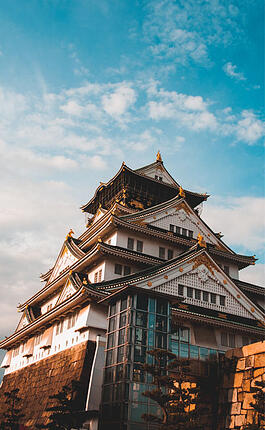
Day 10 - 11: Hiroshima and Miyajima
Hiroshima is much more than its tragic past and deserves to be explored. You’re bound to put it on your favorites list after exploring its historical sights, fun galleries, and delicious cuisine.
How to Get There
Duration: 1 hour and 30 minutes – 2 hours and 13 minutes.
Take the train from Shin-Osaka Station to Hiroshima Station. You can choose between Sakura (1 hour and 30 minutes) or Hikari (2 hours and 13 minutes).
Where to Stay in Hiroshima
- Luxury: The Sheraton Grand Hotel is modern, high-end, and boasts beautiful wide rooms.
- Mid-Range: Mitsui Garden Hotel Hiroshima is a modern hotel that is only a few minutes’ walk to the Peace Memorial Park.
- Budget: J-Hoppers Hiroshima Guesthouse – This hostel is a perfect budget gem.
Where to Eat in Hiroshima
- Yakigaki-no-Hayashi – a fantastic seafood restaurant which reflects Japanese cuisine in all its dishes
- Okonomi-Mura – try the local delicacy called okonomiyaki
- Shanti Vegan Café – healthy, vegan choices – great for breakfast!
- Hassei – another okonomiyaki restaurant catered more towards locals
What to Do in Hiroshima – Day 10
Visit the Atomic Bomb Dome to learn about the history and significance of Hiroshima. This UNESCO World Heritage Site is the only building that remained standing after the U.S. dropped the atomic bomb in 1945.
Continue your path of reflection and walk through the Hiroshima Peace Memorial Museum. Spend time looking at the award-winning architecture and talk to the A-Bomb Legacy Successors to hear first-hand accounts of survivors’ experiences.
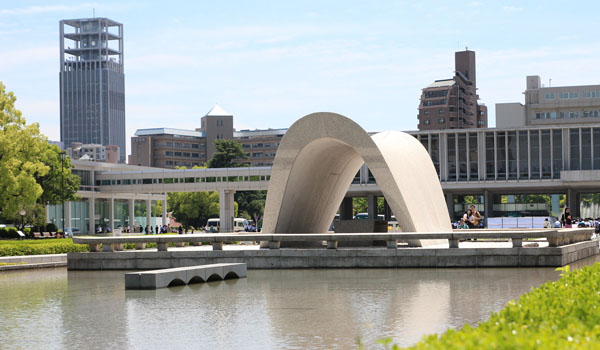
The museum can get graphic, but it presents an unforgettable tragedy in Japanese history that should be a focal point of any trip to Hiroshima.
Unwind and decompress by visiting Shukkei-en, a Japanese garden that sees cherry blossoms in spring. You’ll almost certainly get to see a Kimono-clad couple or two getting their weddings pictures taken.
Discover masterpieces by Monet, Picasso, and the like at the Museum of Art or visit Hiroshima Castle on a Sunday to attend a traditional dance performance and see the Samurai history exhibit.
What to Do in Miyajima – Day 11
Take a 25-minute morning ferry (covered by the JR pass) to the islands of Miyajima. Spend the ferry ride above deck so you can enjoy the views of the Torii (traditional Japanese gates) as they stand tall above the waters.
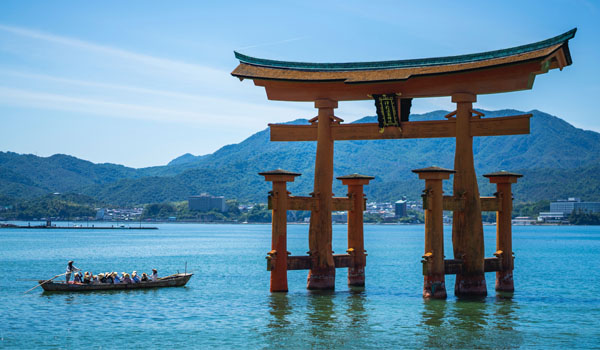
Once on land, you’ll be met by the island’s friendliest locals: the mini deer. It will be hard to resist getting close to them, but be sure to keep your distance!
Spend your day exploring Itsukushima Jinja, a UNESCO World Heritage Site and one of the most stunning shrines in Japan. Try to stick around for low-tide so you can get as close as possible to the grand structure.
The final attraction you should see in Miyajima is Senjokaku Hall. Senjokaku Hall dates back to 1587 and is strikingly sparse. The size of one thousand tatami mats, the building itself lacks proper ceilings and a front entrance. The awe-inspiring hall also gives you the absolute best views of Satonaikai National Park.
Day 12: Nagoya
How to Get There
Duration: 3 hours and 20 minutes
Take the Hiraki train from Hiroshima to Nagoya and get ready to experience this diverse little city.
Where to Stay in Nagoya
- Luxury: Book a room at either Nagoya Kanko Hotel, located right in the Naka Ward, or Hotel Nagoya Castle, perched in the center of the most luxurious area in Nagoya.
- Mid-Range: Get great value from a stay at either Nishitetsu Inn Nagoya or Hotel Vista Nagoya.
- Budget: Cozy and clean, Café & Guest House Nagonoya offers great access to public transport.
Where to Eat in Nagoya
- Misokatsu Yabaton – the best place to try traditional street food from the heart of Nagoya
- Nikomi No Takara – try the renowned Misonikomi
- Atsuta Houraiken honten – be sure to taste Hitsumabushi, Nagoya’s signature dish
What to Do in Nagoya
Head towards Osu for some top-notch shopping, specifically for handicrafts and quirky fashion. Meander for a few hours at the Tokugawa Art Museum and observe timeless treasures from three different Heian periods.
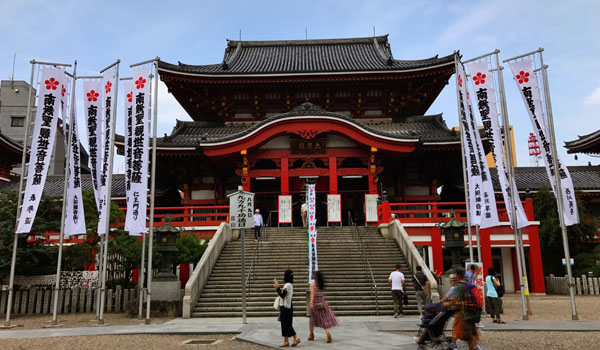
No trip to Nagoya is complete without a stop at Nagoya Castle. One of the most symbolic castles in Japan – and one of the largest – Nagoya Castle has been restored quite a few times since it was built in 1612. To this day it still emanates an unparalleled sense of magnificence.
Day 13: Nikko
Explore the unspoiled nature that Nikko has to offer on your last day before you head back to Tokyo. It’s a great weekend escape from Tokyo, and it’s the perfect way to end your Japan 14-day itinerary.
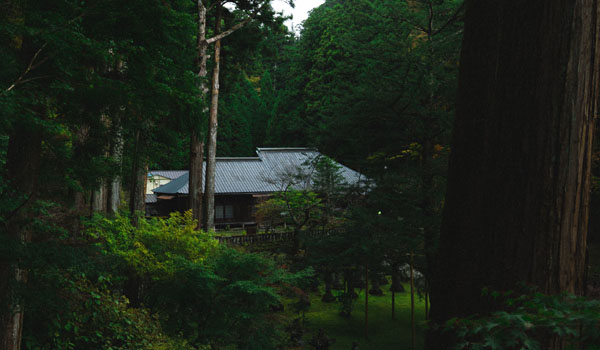
Where to Stay in Nikko
- Luxury: Okunoin Hotel Tokugawa is a luxurious hotel with an indoor onsen, an incredible restaurant, and beautiful rooms.
- Mid-Range: Nikko Park Lodge Tobu Station is conveniently located next to a train station.
- Budget: Rindo-no-le is a small ryokan that reflects Japanese hospitality.
Where to Eat in Nikko
- Yasai Café Meguri – a vegan café located inside an art gallery
- Komekichi Kozushi – ideal for sushi
What to Do in Nikko
Start your day at the bright red bridge that is symbolic to Nikko – Shinkyo Bridge. From there, you will find temples and shrines all the way through the forest. We recommend visiting the mausoleum of Japan’s most successful shogun, known as Tokugawa Leyasu.
The highlight of your visit to Nikko will be the Toshogu Shrine. It’s easily one of the most stunning temples you will ever visit. The shrine is lavishly decorated and consists of more than a dozen buildings set in the beautiful forest. This shrine is particularly unique, as gold leaf and wood carvings decorate the buildings – a break from the traditional simplicity of shrine architecture.
Spend the rest of your day adventuring through Nikko National Park. Then make your way to Lake Chuzenji to see Japan’s most favorite waterfalls: the Kegon Falls.
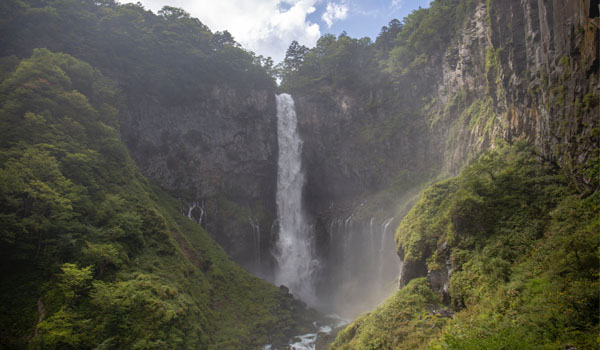
Day 14: Tokyo and Departure
Sadly, you’ll spend your last day checking out, heading back to Tokyo, and bidding farewell to everything that Japan has to offer.
Final Thoughts
This 14-day Japan travel itinerary only scratches the surface of all the history, art, and culture you can immerse yourself in when you visit Japan. The country needs months for true exploration, but this two-week itinerary is a great place to start!

